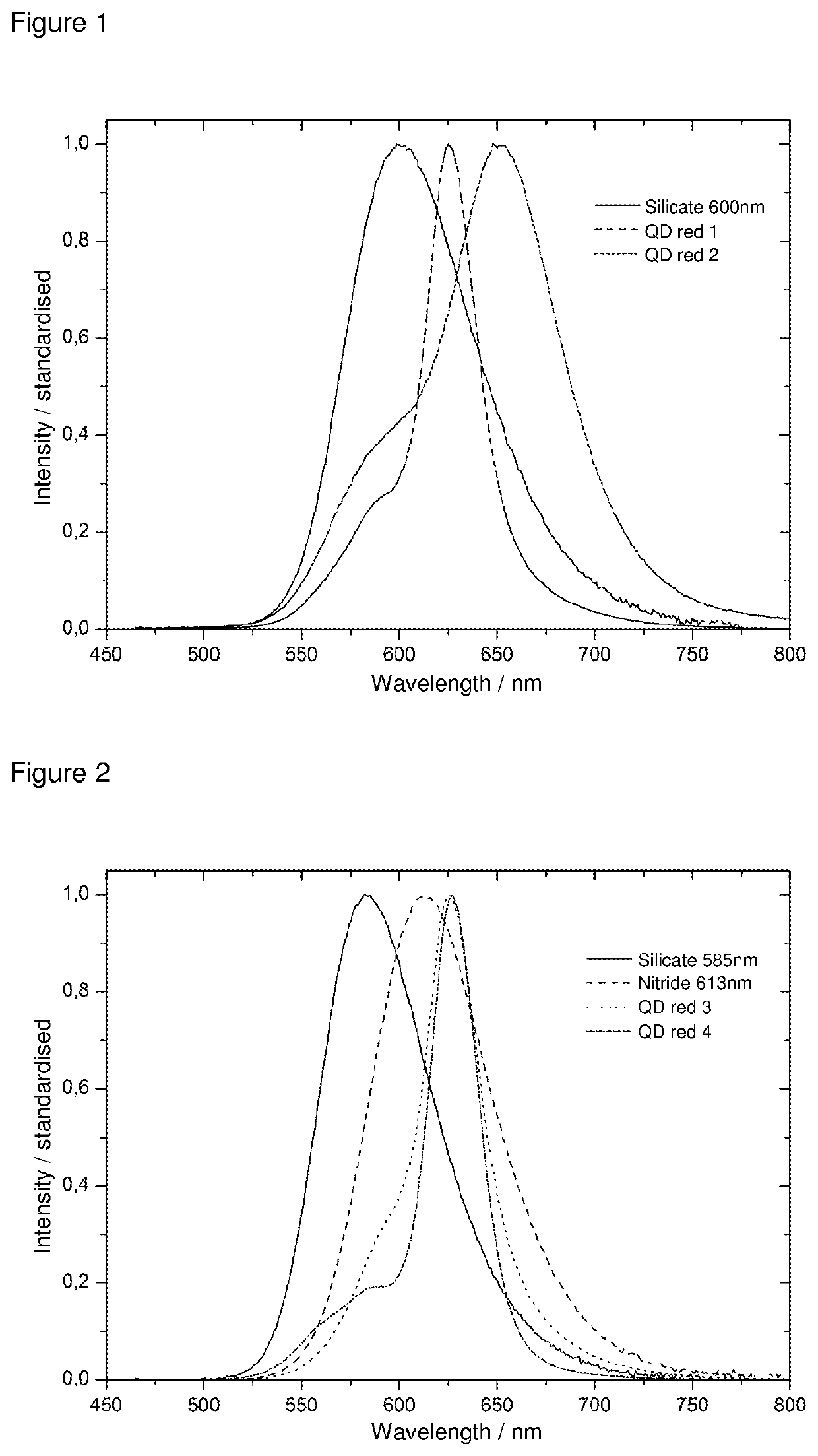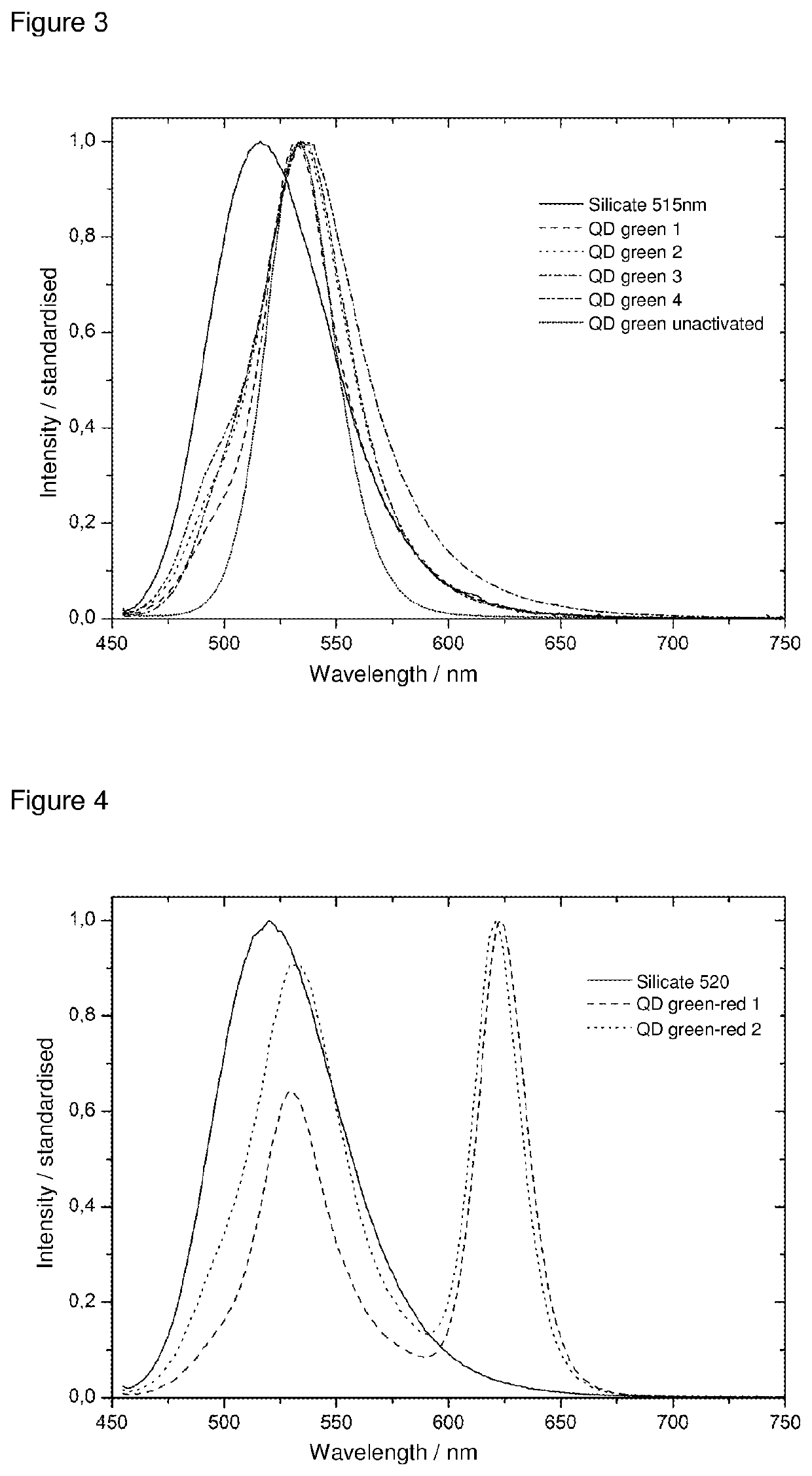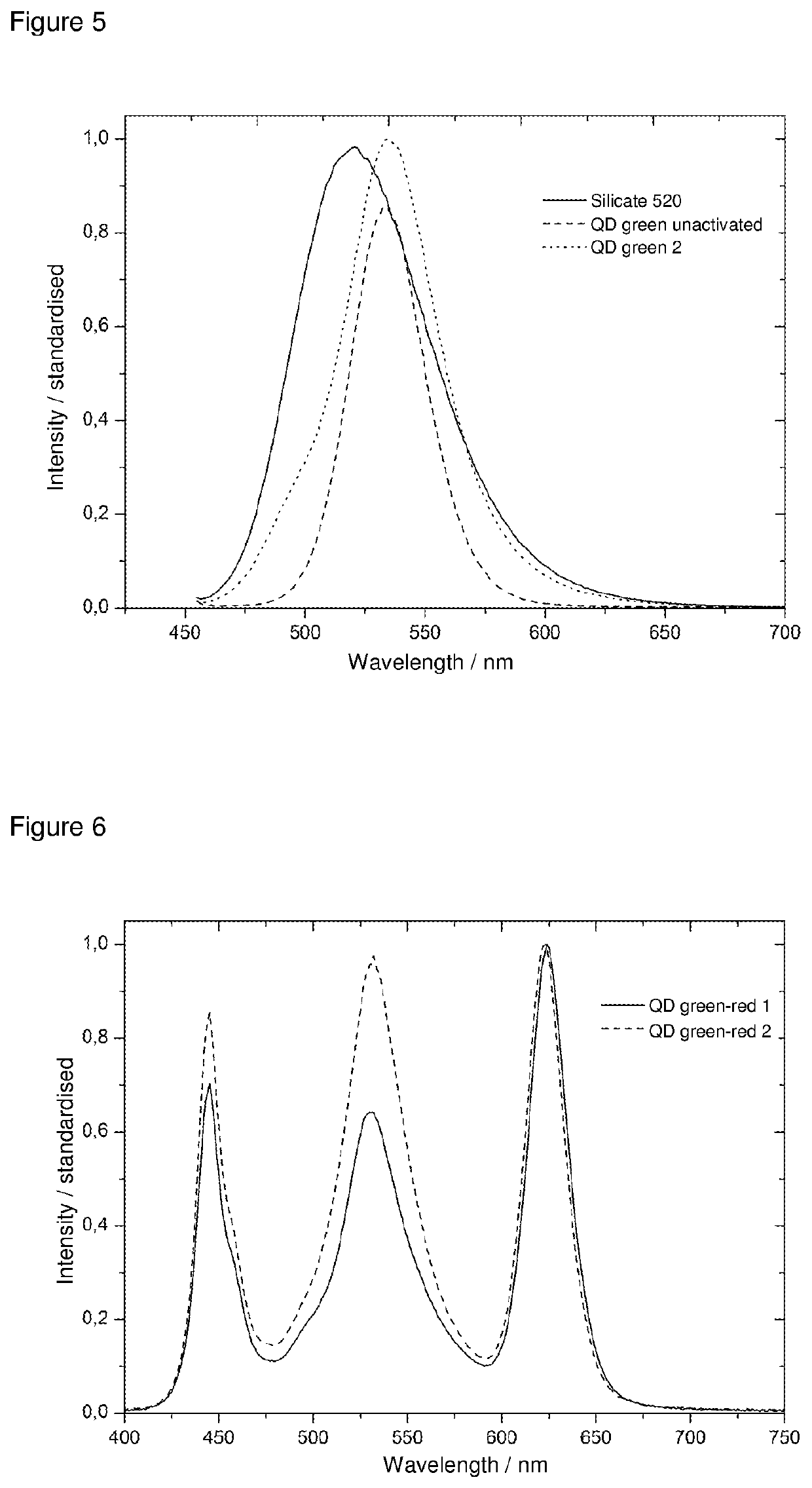Light-converting material
a technology of light-converting materials and leds, which is applied in the direction of luminescent compositions, semiconductor devices, chemistry apparatus and processes, etc., can solve the problems of ineffective efficiency of conventional incandescent lamps, inability to generate “white” light, which is necessary for much of the lighting industry, and virtually never ideal white light of this type. achieve the effect of avoiding separation effects during mixing, improving miscibility with conventional phosphors, and facilitating more efficient production of leds
- Summary
- Abstract
- Description
- Claims
- Application Information
AI Technical Summary
Benefits of technology
Problems solved by technology
Method used
Image
Examples
example 1
[0175] 5 g of an orange pulverulent, Eu2+-activated silicate phosphor ((Ba,Sr)3SiO5 with λem,max=600 nm) are suspended in 15 ml of toluene in a 100 ml flask. 50 mg of a red nanodot suspension (20% weight of CdSe / CdS-based semiconductor nanocrystals having a peak emission wavelength of 625 nm in toluene) are added to the suspension. This suspension is stirred for 1 h. The solvent is carefully removed in vacuo in a rotary evaporator at a water bath temperature of 50° C. The treated silicate powder (QD red 1) is dried in vacuo at a water bath temperature 50° C. for a further 1.5 h.
[0176]Example 2: 5 g of an orange pulverulent, Eu2+-activated silicate phosphor ((Ba,Sr)3SiO5 with λem,max=600 nm) are suspended in 15 ml of toluene in a 100 ml flask. 1.74 g of a red nanodot suspension (10% by weight of InP / ZnS-based semiconductor nanocrystals having a peak emission wavelength of 648 nm in toluene) are added to the suspension. This suspension is mixed by stirring for 2.5 h. The solvent is ca...
example 5
[0179] 5 g of a green pulverulent, Eu2+-activated silicate phosphor ((Ba,Sr)2SiO4 with λem,max=517 nm) are suspended in 15 ml of toluene in a 100 ml flask. 600 mg of a green nanodot suspension (20% by weight of CdSe / CdS / ZnS-based semiconductor nanocrystals having a peak emission wavelength of 525 nm in toluene) are added to the suspension. This suspension is stirred for 2 h. The solvent is carefully removed in vacuo in a rotary evaporator at a water bath temperature of 50° C. The treated silicate powder (QD green 1) is dried in vacuo at a water bath temperature of 50° C. for a further hour.
[0180]Example 6: 5 g of a green pulverulent, Eu2+-activated silicate ((Ba,Sr)2SiO4 with λem,max=520 nm) are suspended in 15 ml of ethanol in a 100 ml flask. 1.0 g of a green nanodot suspension (10% by weight of CdSe / CdS / ZnS-based semiconductor nanocrystals having a peak emission wavelength of 525 nm in water) are added to the suspension. This suspension is stirred for 4 h. The solvent is carefully...
example 11
[0185] 5 g of a green pulverulent, Eu2+-activated orthosilicate phosphor ((Sr,Ba)2SiO4 with λem,max=520 nm) are suspended in 15 ml of toluene in a 100 ml flask. 71 mg of a red nanodot suspension (20% by weight of CdSe / CdS-based semiconductor nanocrystals having a peak emission wavelength of 625 nm in toluene) are added to the suspension. This suspension is stirred for 1 h. The solvent is carefully removed in vacuo in a rotary evaporator at a water bath temperature of 50° C. For complete removal of the solvent, the treated silicate is left in vacuo in the rotary evaporator at 50° C. for a further hour. The treated silicate is subsequently suspended in 10 ml of ethanol, and 810 mg of a green nanodot suspension (10% by weight of CdSe / CdS / ZnS-based semiconductor nanocrystals having a peak emission wavelength of 525 nm in water) are added. After stirring for one hour at room temperature, the solvent is carefully removed in vacuo in a rotary evaporator at a water bath temperature of 50° C...
PUM
 Login to View More
Login to View More Abstract
Description
Claims
Application Information
 Login to View More
Login to View More - R&D
- Intellectual Property
- Life Sciences
- Materials
- Tech Scout
- Unparalleled Data Quality
- Higher Quality Content
- 60% Fewer Hallucinations
Browse by: Latest US Patents, China's latest patents, Technical Efficacy Thesaurus, Application Domain, Technology Topic, Popular Technical Reports.
© 2025 PatSnap. All rights reserved.Legal|Privacy policy|Modern Slavery Act Transparency Statement|Sitemap|About US| Contact US: help@patsnap.com



